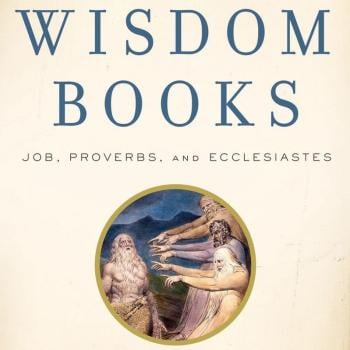Here’s a recent post by Larry Hurtado on the Son of Man material in the NT.
“The Son of Man”: An Obsolete Phantom
by larryhurtado
In recent comments, some have pointed to scholars who have posited that when Jesus used the expression “the son of man” he was referring to some other, future figure, not himself. This is a view that once was quite widely shared, and so will be found frequently in older commentaries and studies, and may still be found from scholars who haven’t kept abreast of analysis of the evidence over the last several decades.
The reason that it no longer has the same appeal is that this view rested on the accompanying and likewise once widely-held assumption that “the Son of Man” was a well-known title for an eschatological redeemer figure, a heavenly being who supposedly was expected widely in second-temple Jewish tradition. So, on this assumption, when Jesus spoke of “the son of man,” he obviously couldn’t have been referring to himself as an earthly/mortal man. Indeed, so the assumption went, when he used the expression everyone then would have recognized that he was referring to this supposed other/future figure, for (to reiterate the crucial assumption) “the Son of Man” was supposedly a well-known appelative for this heavenly redeemer being.
But at least from the 1970s onward, it has become increasingly widely granted that, in fact, there is no evidence for the supposed use of “the son of man” as a fixed title for any figure in second-temple Jewish tradition.[1] There are texts that describe a heavenly being who will come and lead God’s people in triumph, such as the Melchizedek figure in the Qumran text, 11QMelchizedek. But he’s called “Melchizedek,” not “the son of man”! And it appears that some expected the archangel Michael to serve in this role, but he too isn’t ever referred to by the title “the Son of Man.” As for the messianic figure of the Parables of 1 Enoch, I’ve repeatedly reminded readers that there too we don’t actually have “the son of man” as a fixed title for this figure (e.g., here). (The English translations all too typically mislead readers by rendering several Ethiopic expressions used in the Parables by this one fixed translation.)
So, “the Son of Man” wasn’t actually a familiar title for a well-known eschatological redeemer being/figure in second-temple Judaism.[2] And so when Jesus used the expression he can’t have been referring to a figure using a title that people would have readily recognized as designating some other, future eschatological redeemer. You see? The crucial basis for taking Jesus’ use of the expression as referring to some other figure was washed away. So the consequent structure built on that basis cannot continue to stand.
We are left, thus, with what is rather clearly how the Evangelists read and intended the expression: a peculiar self-designation idiom used in the Gospels only by Jesus (some 80x). A “son of man” is, of course, an idiomatic way of designating a human being in ancient Semitic languages (Hebrew & Aramaic), and “sons of man” the plural equivalent. But the particularizing forms in Greek (ο υιος του ανθρωπου), or Aramaic (בר אנשא), or Hebrew (בנ האדם) are hard to find. So “the son of man” seems to have been something of a linguistic innovation, and would have had the sense of “the/this son of man” (in particular). All of the Gospel sayings where Jesus is portrayed using the expression are easily read as sentences where he simply refers to himself, making this or that statement about himself under this peculiar phrase. There is neither need nor (more importantly) any evidential basis for taking the expression as referring to some other/future figure. The expression “the son of man” itself simply has this particularizing force, isn’t a title, and didn’t carry any automatic referential force. It is the sentences in which it is used that make any statement about “the son of man,” and in each case the statement says something about Jesus.
[1] Among early and crucial studies were Geza Vermes, “The Use of Bar Nasha/Bar Nash in Jewish Aramaic,” in An Aramaic Approach to the Gospels and Acts, by Matthew Black (3rd ed.; Oxford: Oxford University Press, 1967), 310-30; Ragnar Leivestad, “Exit the Apocalyptic Son of Man,” New Testament Studies 18 (1971): 243-67. On the various linguistic issues and texts, see now the multi-author volume, Larry W. Hurtado and Paul L. Owen (eds.), ‘Who Is This Son of Man?’ The Latest Scholarship on a Puzzling Expression of the Historical Jesus (London: T&T Clark, 2011).
[2] Cf. John J. Collins, “The Son of man in First-Century Judaism,” New Testament Studies 38(1992): 448-66, who argues that there, though “the Son of Man” was not a fixed title there was a “concept” associated with the figure of Daniel 7:13-14. Quite possibly so. But the crucial point is that Jesus’ use of “the son of man” didn’t reflect some supposedly recognized title. A crucial early study of how the Daniel 7 figure was treated in ancient Jewish tradition is Maurice Casey, Son of Man: The Interpretation and Influence of Daniel 7 (London: SPCK, 1979).















